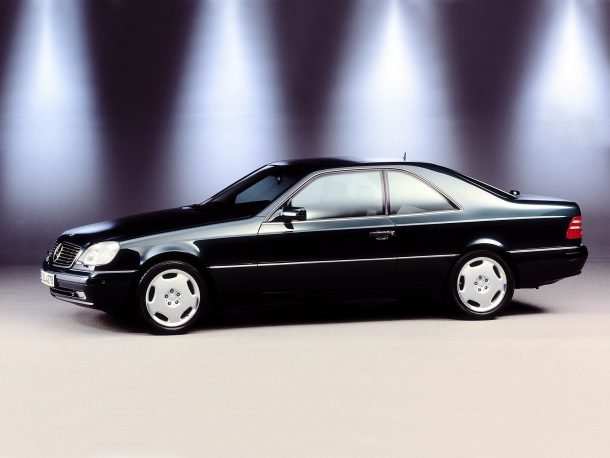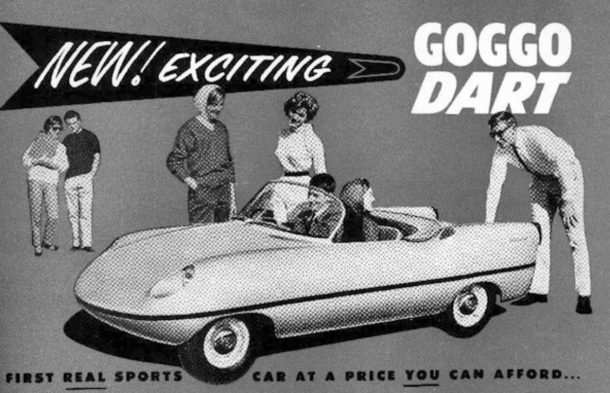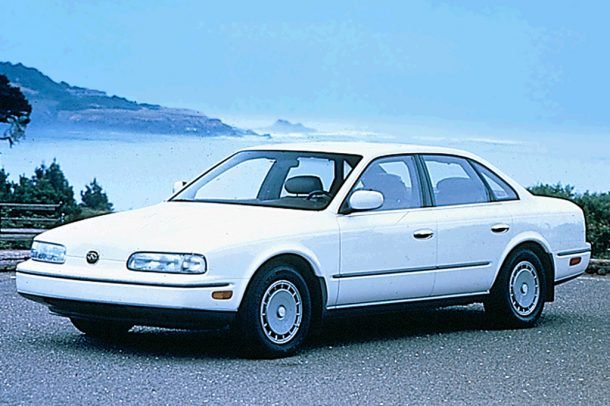 Late last year I put forth some thoughts about the future direction of Infiniti, largely about how the company was on a downward trajectory. Looking forward, the brand needs a major change in direction – not much has changed since December when I wrote that piece.
Late last year I put forth some thoughts about the future direction of Infiniti, largely about how the company was on a downward trajectory. Looking forward, the brand needs a major change in direction – not much has changed since December when I wrote that piece.
But one might then logically ask “Where did the company first lose its way?” I’m going to answer that question right now. Let’s take a little trip to the Before Times, in 1990.
That was the first model year for Infiniti just like it was the first model year for Lexus, but Infiniti started off on the wrong foot. I am of course speaking about the Q45, the grill-free, no-nonsense, no-wood, super-serious, full-size luxury sedan that was the company’s flagship. Where Lexus spent big money and years dreaming up an all-new car for its first U.S. luxury foray, Nissan went the cheap route. It took the upcoming new-generation President (the company’s JDM full-sizer) and then tried to Americanize it. Whereas Lexus made a more reliable Mercedes-Benz S-Class, Infiniti made a more hardcore BMW 7-Series without any of the iconic styling.
Americans wanted wood, ruched leather, a hood ornament, and a reasonably compliant suspension in their large sedans (they hate all that shit today, but whatever). Infiniti got a focus group together and then proceeded to edit the President into a firm-riding car without any wood or ruched leather. No grille, no hood ornament. After Judgment Error Number One was finished, they hired an ad agency to produce commercials for the exciting new Q45, and chose not to show it to customers. That’s right, they assumed that the luxury car buyer concerned with image and prestige would visit their dealer upon seeing an ad with a lake, rocks, and trees and “You can see this at a dealer!” tag line. That didn’t work then, and it wouldn’t work today. It was a terrible idea.
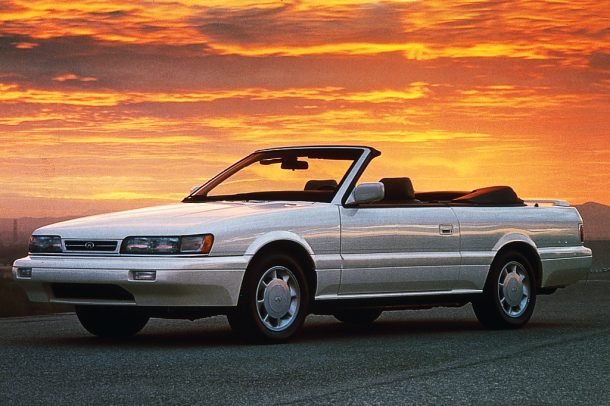 Their other premier offering was the M30 coupe and convertible. Based again on an existing Nissan, the Leopard, Infiniti went cheapo. Lexus spent big time money on the SC 400 and amortized that cost with the now-legendary Supra with which it shared a platform. The Leopard had some wood and leather added eventually (they’re learning!) and debuted as the M30. The Leopard wasn’t a bad car per se, and it had the V6 from the 300ZX. But it was again not what the American customer wanted. It was dated looking, too square, too small, not nice enough inside for the asking price, and half-assed. The SC and Acura Legend trounced it.
Their other premier offering was the M30 coupe and convertible. Based again on an existing Nissan, the Leopard, Infiniti went cheapo. Lexus spent big time money on the SC 400 and amortized that cost with the now-legendary Supra with which it shared a platform. The Leopard had some wood and leather added eventually (they’re learning!) and debuted as the M30. The Leopard wasn’t a bad car per se, and it had the V6 from the 300ZX. But it was again not what the American customer wanted. It was dated looking, too square, too small, not nice enough inside for the asking price, and half-assed. The SC and Acura Legend trounced it.
 Shortly thereafter, Infiniti went after the Lexus ES 300 and the BMW 3-Series with the Nissan Primera-based G20. The Primera was more a world car than the President or Leopard, and more competitive generally. But G20 was a compact sedan with very bland styling, again based on something slightly too small for its American purpose. The ES 300 was larger and more luxurious and had interesting frameless windows. Most importantly, the ES didn’t look like it was a Camry. The G20 looked like a Sentra – which it wasn’t – but people assumed it anyway. People still think that even today in the age of the Internet. The G20 did make it quite a while (another problem) and earned itself a second generation that ran from 1999 to 2002. Infiniti had been around for nine years when the second G20 debuted, and the brand was still was doing badge swap jobs against unique Lexus product.
Shortly thereafter, Infiniti went after the Lexus ES 300 and the BMW 3-Series with the Nissan Primera-based G20. The Primera was more a world car than the President or Leopard, and more competitive generally. But G20 was a compact sedan with very bland styling, again based on something slightly too small for its American purpose. The ES 300 was larger and more luxurious and had interesting frameless windows. Most importantly, the ES didn’t look like it was a Camry. The G20 looked like a Sentra – which it wasn’t – but people assumed it anyway. People still think that even today in the age of the Internet. The G20 did make it quite a while (another problem) and earned itself a second generation that ran from 1999 to 2002. Infiniti had been around for nine years when the second G20 debuted, and the brand was still was doing badge swap jobs against unique Lexus product.
<img data-attachment-id=”1617298″ data-permalink=”https://www.thetruthaboutcars.com/2018/03/buy-drive-burn-1995-buying-sports-luxury-sedan/attachment/97804011990406/” data-orig-file=”http://gagetruck.com/wp-content/uploads/2021/07/opinion-heres-where-infiniti-lost-its-way-29.jpg” data-orig-size=”1024,682″ data-comments-opened=”1″ data-image-meta=”{“aperture”:”0″,”credit”:””,”camera”:””,”caption”:””,”created_timestamp”:”0″,”copyright”:””,”focal_length”:”0″,”iso”:”0″,”shutter_speed”:”0″,”title”:””,”orientation”:”1″}” data-image-title=”1995 Infiniti J30t” data-image-description=”
Image Infiniti
” data-medium-file=”http://gagetruck.com/wp-content/uploads/2021/07/opinion-heres-where-infiniti-lost-its-way-26.jpg” data-large-file=”http://gagetruck.com/wp-content/uploads/2021/07/opinion-heres-where-infiniti-lost-its-way-3.jpg” class=”aligncenter size-large wp-image-1617298″ src=”http://gagetruck.com/wp-content/uploads/2021/07/opinion-heres-where-infiniti-lost-its-way-3.jpg” alt width=”610″ height=”406″ srcset=”http://gagetruck.com/wp-content/uploads/2021/07/opinion-heres-where-infiniti-lost-its-way-3.jpg 610w, http://gagetruck.com/wp-content/uploads/2021/07/opinion-heres-where-infiniti-lost-its-way-25.jpg 75w, http://gagetruck.com/wp-content/uploads/2021/07/opinion-heres-where-infiniti-lost-its-way-26.jpg 450w, http://gagetruck.com/wp-content/uploads/2021/07/opinion-heres-where-infiniti-lost-its-way-27.jpg 768w, http://gagetruck.com/wp-content/uploads/2021/07/opinion-heres-where-infiniti-lost-its-way-28.jpg 120w, http://gagetruck.com/wp-content/uploads/2021/07/opinion-heres-where-infiniti-lost-its-way-29.jpg 1024w” sizes=”(max-width: 610px) 100vw, 610px”>Don’t worry I didn’t forget the other Nineties flop they had, the midsize J30! Again with 300ZX power, the J30 was a slight rework of an updated Leopard, the Leopard J Ferie sedan. At least the J30 had unique looks, but they came at a price: Space. The midsize exterior of the J was not reflected in its interior, where it had space like a subcompact. The J was smaller than a contemporary Sentra inside because of its aggressive roofline and stubby trunk. The ingredients were there on this one: good engine, rear-drive platform, Poltrona Frau interior. But they misjudged the market again and delivered a car too small and too quirky looking for Americans. The rear end treatment is not dissimilar to a bustle-back Seville, really. And how’d that one go?
<img data-attachment-id=”1670270″ data-permalink=”https://www.thetruthaboutcars.com/2019/04/qotd-your-least-favorite-rear-drive-nineties-ride/q45_pebble-beach/” data-orig-file=”http://gagetruck.com/wp-content/uploads/2021/07/opinion-heres-where-infiniti-lost-its-way-34.jpg” data-orig-size=”800,518″ data-comments-opened=”1″ data-image-meta=”{“aperture”:”0″,”credit”:””,”camera”:””,”caption”:””,”created_timestamp”:”0″,”copyright”:””,”focal_length”:”0″,”iso”:”0″,”shutter_speed”:”0″,”title”:””,”orientation”:”0″}” data-image-title=”1997 Infiniti Q45″ data-image-description=”
Infiniti
” data-medium-file=”http://gagetruck.com/wp-content/uploads/2021/07/opinion-heres-where-infiniti-lost-its-way-31.jpg” data-large-file=”http://gagetruck.com/wp-content/uploads/2021/07/opinion-heres-where-infiniti-lost-its-way-4.jpg” class=”aligncenter size-large wp-image-1670270″ src=”http://gagetruck.com/wp-content/uploads/2021/07/opinion-heres-where-infiniti-lost-its-way-4.jpg” alt width=”610″ height=”395″ srcset=”http://gagetruck.com/wp-content/uploads/2021/07/opinion-heres-where-infiniti-lost-its-way-4.jpg 610w, http://gagetruck.com/wp-content/uploads/2021/07/opinion-heres-where-infiniti-lost-its-way-30.jpg 75w, http://gagetruck.com/wp-content/uploads/2021/07/opinion-heres-where-infiniti-lost-its-way-31.jpg 450w, http://gagetruck.com/wp-content/uploads/2021/07/opinion-heres-where-infiniti-lost-its-way-32.jpg 768w, http://gagetruck.com/wp-content/uploads/2021/07/opinion-heres-where-infiniti-lost-its-way-33.jpg 120w, http://gagetruck.com/wp-content/uploads/2021/07/opinion-heres-where-infiniti-lost-its-way-34.jpg 800w” sizes=”(max-width: 610px) 100vw, 610px”>This Nineties foundation started Infiniti off in the wrong direction, and the brand really never recovered. There was overcompensation in the opposite direction in the case of the second-gen Q45. It was a mushy, Buick-like car without a unique V8 (and was actually 4.1-liter). Gen-two Q was based on a smaller less prestigious car than the original Q. While Lexus was improving the LS 400 into the LS 430, Infiniti aimed downward and put forth a smaller car with a shorter wheelbase and a smaller engine. But it had lots of ruched leather and wood, at least. Your father might have considered one if he didn’t like the Park Avenue’s styling update in ’97.
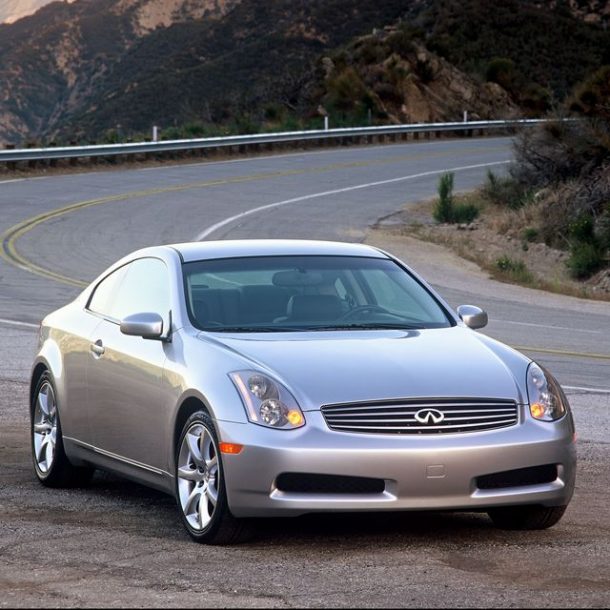 The company’s had two or three bright spots along the way, but they’ve never been able to replicate the success or mature it into a second-generation offering. The G35 was a sales success and brought back sporting credibility to Infiniti. Sedan, coupe, convertible, the G35 was the right product at the right time. It used Nissan’s FM platform that carried over into the G37 version, where things started to fall apart. It wasn’t as inspired as the G35, and overall less original. The VQ V6 problem was here too, among others: Each time Nissan made the VQ larger it lost some refinement, sounded more like a paint mixer, and got more thirsty (3.0, 3.5, 3.7, 4.0). G37 became Q50 and Q60, and that 20-year-old FM platform is still in use today. It’s a big problem that Nissan can’t seem to fix.
The company’s had two or three bright spots along the way, but they’ve never been able to replicate the success or mature it into a second-generation offering. The G35 was a sales success and brought back sporting credibility to Infiniti. Sedan, coupe, convertible, the G35 was the right product at the right time. It used Nissan’s FM platform that carried over into the G37 version, where things started to fall apart. It wasn’t as inspired as the G35, and overall less original. The VQ V6 problem was here too, among others: Each time Nissan made the VQ larger it lost some refinement, sounded more like a paint mixer, and got more thirsty (3.0, 3.5, 3.7, 4.0). G37 became Q50 and Q60, and that 20-year-old FM platform is still in use today. It’s a big problem that Nissan can’t seem to fix.
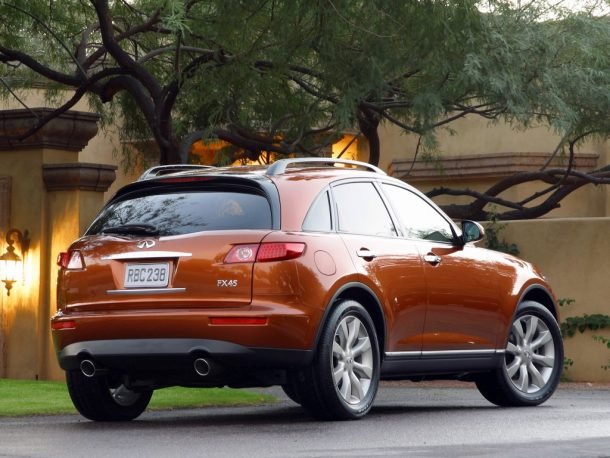 FM also became the FX35, a stylish and unique crossover way ahead of its time. But then it turned into the FX37 and started looking like a fish. There weren’t enough new ideas there, and people demanded more cargo room out of their midsize two-row SUV circa 2009. They’d be okay with crap cargo room now because that’s marketable as “coupe SUV,” which is bullshit, but it would’ve worked had the FX persisted today.
FM also became the FX35, a stylish and unique crossover way ahead of its time. But then it turned into the FX37 and started looking like a fish. There weren’t enough new ideas there, and people demanded more cargo room out of their midsize two-row SUV circa 2009. They’d be okay with crap cargo room now because that’s marketable as “coupe SUV,” which is bullshit, but it would’ve worked had the FX persisted today.
<img data-attachment-id=”1618832″ data-permalink=”https://www.thetruthaboutcars.com/2018/03/qotd-whats-reliable-car-youve-ever-owned/attachment/96804051990203/” data-orig-file=”http://gagetruck.com/wp-content/uploads/2021/07/opinion-heres-where-infiniti-lost-its-way-50.jpg” data-orig-size=”1024,682″ data-comments-opened=”1″ data-image-meta=”{“aperture”:”0″,”credit”:””,”camera”:””,”caption”:””,”created_timestamp”:”0″,”copyright”:””,”focal_length”:”0″,”iso”:”0″,”shutter_speed”:”0″,”title”:””,”orientation”:”1″}” data-image-title=”1997 Infiniti I30″ data-image-description=”
Image Infiniti
” data-medium-file=”http://gagetruck.com/wp-content/uploads/2021/07/opinion-heres-where-infiniti-lost-its-way-47.jpg” data-large-file=”http://gagetruck.com/wp-content/uploads/2021/07/opinion-heres-where-infiniti-lost-its-way-7.jpg” class=”aligncenter size-large wp-image-1618832″ src=”http://gagetruck.com/wp-content/uploads/2021/07/opinion-heres-where-infiniti-lost-its-way-7.jpg” alt=”Image: 1997 Infiniti I30″ width=”610″ height=”406″ srcset=”http://gagetruck.com/wp-content/uploads/2021/07/opinion-heres-where-infiniti-lost-its-way-7.jpg 610w, http://gagetruck.com/wp-content/uploads/2021/07/opinion-heres-where-infiniti-lost-its-way-46.jpg 75w, http://gagetruck.com/wp-content/uploads/2021/07/opinion-heres-where-infiniti-lost-its-way-47.jpg 450w, http://gagetruck.com/wp-content/uploads/2021/07/opinion-heres-where-infiniti-lost-its-way-48.jpg 768w, http://gagetruck.com/wp-content/uploads/2021/07/opinion-heres-where-infiniti-lost-its-way-49.jpg 120w, http://gagetruck.com/wp-content/uploads/2021/07/opinion-heres-where-infiniti-lost-its-way-50.jpg 1024w” sizes=”(max-width: 610px) 100vw, 610px”>Their third success was the I30 and subsequent I35, reworked Maximas which were different enough to work because the Maxima underneath them was decent enough at the time. Moderately luxurious, reliable, softer, and quieter than Maxima, attainably priced. The I30 especially was a nice car (if boring). The I35 suffered at the hands of cost-cutting in a big way but was still serviceable, and sold well. I35 lived on too long as Infiniti readied the G.
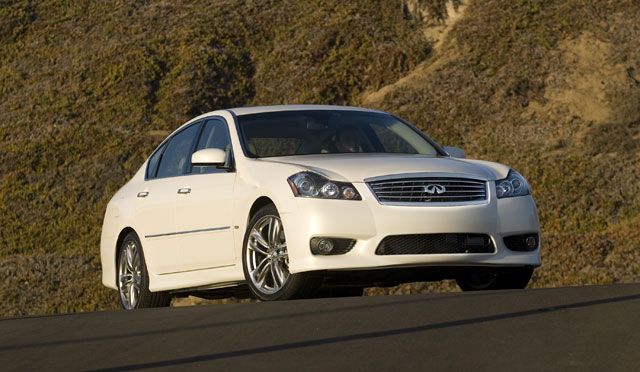 Oh, and there’s more FM: the M35. A larger midsize, M took over for the final Q45 as the only large-ish sedan the brand offered in 2007 (it shared the stage with Q for 2006). It was unrelated to the M45, a rebadged Nissan Gloria circa 2003 that was very enthusiast-approved but flopped with the general public given its looks. A generally successful offering, the M35 was not large enough to compete with full-size offerings from the other luxury brands and went against the E-Class, Lexus GS, and BMW 5-Series. The M had 2003-type styling at introduction in ’06 and maintained it through 2010 when everyone else had long moved forward. It was updated in 2011, again to add fish-like styling elements. It got larger in its rework (still not full-size), and spawned a long-wheelbase L version. It was renamed Q70 in short order but by then nobody cared. Stretched beyond its means, the FM Q70 did not feel well made, had an outdated interior full of 2006 components that were never updated, and was floppy in its handling while being too firm over bumps.
Oh, and there’s more FM: the M35. A larger midsize, M took over for the final Q45 as the only large-ish sedan the brand offered in 2007 (it shared the stage with Q for 2006). It was unrelated to the M45, a rebadged Nissan Gloria circa 2003 that was very enthusiast-approved but flopped with the general public given its looks. A generally successful offering, the M35 was not large enough to compete with full-size offerings from the other luxury brands and went against the E-Class, Lexus GS, and BMW 5-Series. The M had 2003-type styling at introduction in ’06 and maintained it through 2010 when everyone else had long moved forward. It was updated in 2011, again to add fish-like styling elements. It got larger in its rework (still not full-size), and spawned a long-wheelbase L version. It was renamed Q70 in short order but by then nobody cared. Stretched beyond its means, the FM Q70 did not feel well made, had an outdated interior full of 2006 components that were never updated, and was floppy in its handling while being too firm over bumps.
<img data-attachment-id=”1436825″ data-permalink=”https://www.thetruthaboutcars.com/2016/10/consumer-reports-most-reliable-vehicles-mostly-unpopular/2016-infiniti-q70-premium-select-edition/” data-orig-file=”https://www.thetruthaboutcars.com/wp-content/uploads/2016/10/2016-Infiniti-Q70-e1533069414239.jpg” data-orig-size=”2928,1949″ data-comments-opened=”1″ data-image-meta=”{“aperture”:”7.1″,”credit”:”Infiniti”,”camera”:”NIKON D4″,”caption”:”The 2016 Infiniti Q70 Premium Select Edition’s exterior offers dark chrome trim, a darkened lower rear bumper, a rear decklid spoiler and unique design and color 20-inch aluminum-alloy wheels with 245\/40R20 all-season performance tires. The interior of the Q70 Premium Select Edition is highlighted by unique Graphite or Stone semi-aniline leather seating, suede-like headliner, aluminum interior trim, illuminated kickplates and floor mats with contrasting piping.”,”created_timestamp”:”1438974858″,”copyright”:”\u00a9 2015 Infiniti”,”focal_length”:”105″,”iso”:”100″,”shutter_speed”:”0.05″,”title”:”2016 Infiniti Q70 Premium Select Edition”,”orientation”:”1″}” data-image-title=”2016 Infiniti Q70 Premium Select Edition” data-image-description=”
Image: Infiniti
” data-medium-file=”https://www.thetruthaboutcars.com/wp-content/uploads/2016/10/2016-Infiniti-Q70-450×300.jpg” data-large-file=”http://gagetruck.com/wp-content/uploads/2021/07/opinion-heres-where-infiniti-lost-its-way-9.jpg” class=”aligncenter size-large wp-image-1436825″ src=”http://gagetruck.com/wp-content/uploads/2021/07/opinion-heres-where-infiniti-lost-its-way-9.jpg” alt width=”610″ height=”406″>I’ve gone on for a while here and now I’m worn out. In summation, bad foundational product lead to a poor start. The foundational product was bad because Nissan didn’t invest enough in Infiniti the way Toyota did with Lexus and to a lesser extent Honda did with unique product for Acura. The G37 should have been the last FM platform ever, yet Infiniti can’t seem to get away from it. Among their more recent problems, the subsistence on FM is the worst, most important, and most persistent. When are they gonna cut that cord?
[Images: Infiniti]
Related
Looking to see all our inventory across our 20+ stores? Shop thousands of new and used cars at Wise Auto Group
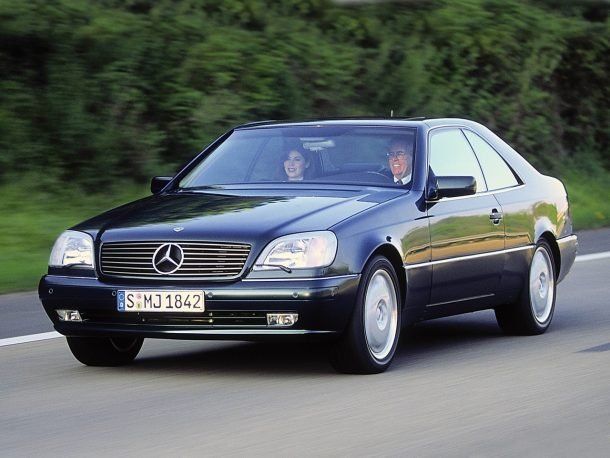 Large, luxurious, and very serious, the first generation CL was also an SEC and S during its life. While Mercedes-Benz played the Nineties naming games with its lineup, the W140 soldiered on in two-door format as a last-of for a top-tier Mercedes coupe.
Large, luxurious, and very serious, the first generation CL was also an SEC and S during its life. While Mercedes-Benz played the Nineties naming games with its lineup, the W140 soldiered on in two-door format as a last-of for a top-tier Mercedes coupe.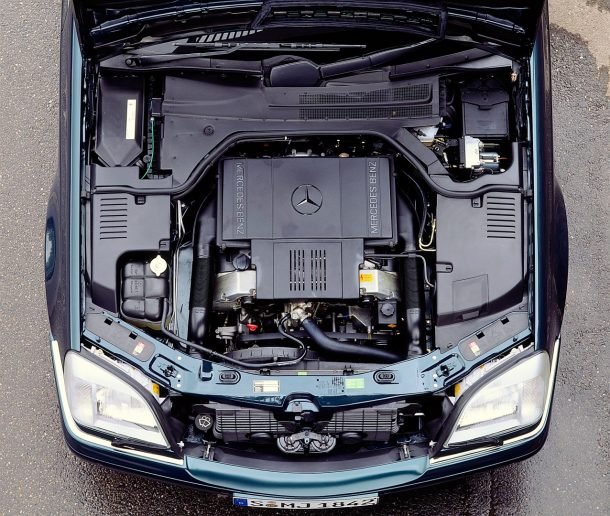 Both versions of the W140 were penned by Bruno Sacco late in 1987, during the middle of his career at Mercedes. Sacco was lead designer at Benz between 1975 and 1999. With the W140, he brilliantly continued the pillarless hardtop styling of the C126. Two models of SEC were initially available: The 500 used a 5.0-liter V8 that produced 320 horsepower, while the top-drawer 600 SEC had a V12. The most expensive car Mercedes produced at the time, it used a 6.0-liter engine that produced 394 horsepower and rocketed the coupe to 60 in 6.1 seconds. The 600 SEC was incredibly exclusive, and fittingly asked $132,000 in 1992. Adjusted for inflation that figure comes to an eye-watering $262,000. V12 models were identifiable almost solely via their V12 badges on the C-pillar and the 600 on the back.
Both versions of the W140 were penned by Bruno Sacco late in 1987, during the middle of his career at Mercedes. Sacco was lead designer at Benz between 1975 and 1999. With the W140, he brilliantly continued the pillarless hardtop styling of the C126. Two models of SEC were initially available: The 500 used a 5.0-liter V8 that produced 320 horsepower, while the top-drawer 600 SEC had a V12. The most expensive car Mercedes produced at the time, it used a 6.0-liter engine that produced 394 horsepower and rocketed the coupe to 60 in 6.1 seconds. The 600 SEC was incredibly exclusive, and fittingly asked $132,000 in 1992. Adjusted for inflation that figure comes to an eye-watering $262,000. V12 models were identifiable almost solely via their V12 badges on the C-pillar and the 600 on the back.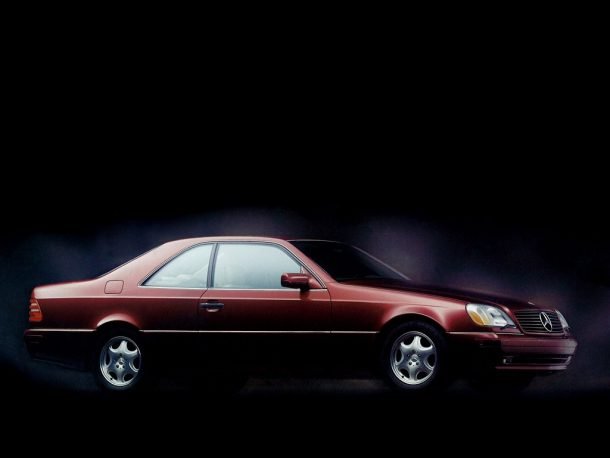 The range expanded into other models over the years, as a less expensive 4.2-liter V8 was an option in some markets. On the other end of the spectrum, AMG models used larger and more powerful V12 engines of 6.0, 6.9, and even 7.3 liters. That largest engine allowed the CL 73 AMG a top speed of 199 miles per hour and was the engine Pagani chose to power the Zonda of the 2000s. Standard Mercedes-issued coupes were all limited by German tradition to 155 mph. A considerable number of horses were required to motivate the CL, since in any trim it weighed at least 4,500 pounds, and weighed about 4,900 pounds with a 12-cylinder lump upfront. All cars used a four- or five-speed automatic dependent on model year.
The range expanded into other models over the years, as a less expensive 4.2-liter V8 was an option in some markets. On the other end of the spectrum, AMG models used larger and more powerful V12 engines of 6.0, 6.9, and even 7.3 liters. That largest engine allowed the CL 73 AMG a top speed of 199 miles per hour and was the engine Pagani chose to power the Zonda of the 2000s. Standard Mercedes-issued coupes were all limited by German tradition to 155 mph. A considerable number of horses were required to motivate the CL, since in any trim it weighed at least 4,500 pounds, and weighed about 4,900 pounds with a 12-cylinder lump upfront. All cars used a four- or five-speed automatic dependent on model year.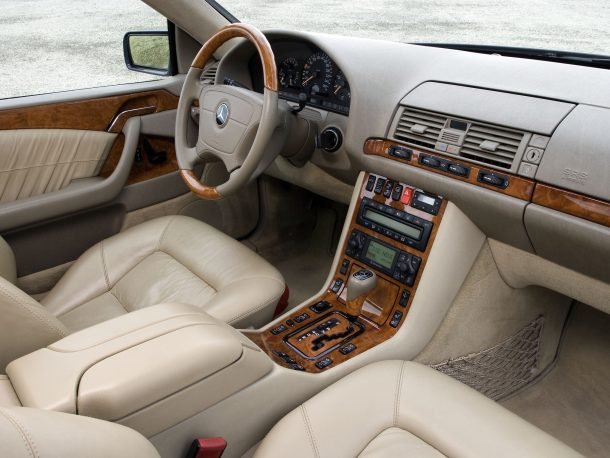 In 1994 the SEC moniker that Mercedes used for decades was replaced by an S, as the S 500 Coupe and S 600 Coupe more closely identified with their sedan sibling. It was a temporary measure though, as for the model year 1997 in Europe and 1998 in North America the S was swapped for CL, and the CL-Class was born. Models were then CL 500, CL 600, and so on. The car underneath changed little over the years, as Mercedes used their best build quality, materials, and technology in their halo coupe.
In 1994 the SEC moniker that Mercedes used for decades was replaced by an S, as the S 500 Coupe and S 600 Coupe more closely identified with their sedan sibling. It was a temporary measure though, as for the model year 1997 in Europe and 1998 in North America the S was swapped for CL, and the CL-Class was born. Models were then CL 500, CL 600, and so on. The car underneath changed little over the years, as Mercedes used their best build quality, materials, and technology in their halo coupe.